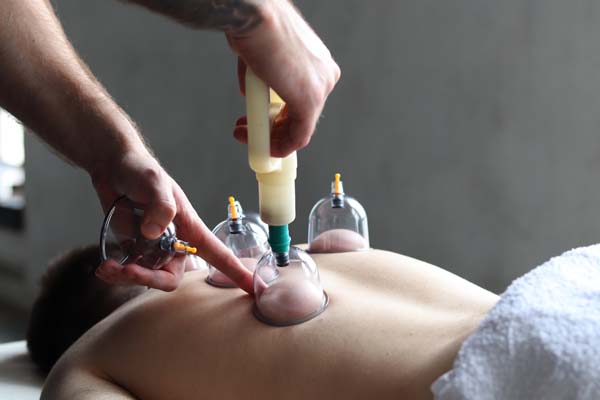Frequently Asked Questions About Cupping

While relatively recently becoming popular in Western cultures, cupping is not a new practice. In fact, it is an ancient medical technique that has been used for thousands of years. This form of alternative medicine has been used to treat a variety of different disorders and issues, as well as for relaxation and stress relief. Discover the answers to some of the most frequently asked questions about cupping.
Common questions about cupping
Though cupping is practiced all over the world, it is probably less well known in Western countries than other alternative medicines like acupuncture. Often practiced in conjunction with therapies like acupuncture and medication, cupping has a variety of uses.
What is cupping?
A therapist performs cupping by placing cups on the patient’s skin that create suction. Traditionally, the suction is created by putting a flammable substance in the cup, lighting it, then extinguishing the flame and turning the cup upside down on the skin. As the warm air in the cup cools, it creates a vacuum effect, pulling the skin and tissue into the cup and increasing blood flow to the area. Cups are left in place for three to five minutes. Some modern therapists use a pump instead of fire to create the suction, but the effect is the same.
The maximum number of cups a therapist uses is usually between five and seven. For a first-time session, three to five cups are more typical, or even just one cup if the patient wants to first see how they will respond to the treatment.
How many methods are there?
There are two common methods used for cupping: Dry and wet. Dry cupping is just as described above, while wet cupping involves another step. After removing the cup, the therapist makes tiny, shallow incisions on the skin and then replaces the cup for a second round of suction. This draws some blood to the surface. The intent is to promote healing by releasing toxins and harmful substances from the body.
Why use cupping?
Cupping may be used as a complementary therapy to treat a medical condition or to promote relaxation and stress relief. These are some of the most common ailments that cupping has been used to treat:
- Acne and eczema
- Blood disorders like hemophilia or anemia
- Varicose veins
- Migraines
- Allergies and related respiratory issues like asthma
- Depression and anxiety
- Arthritis
- Fibromyalgia
It is also used to achieve deep tissue massage, relieve pain and promote overall well-being.
Are there side effects?
Cupping is considered a safe treatment, but patients may experience some side effects like mild discomfort, bruising and swelling at the site where the cups were placed. A clean environment and a therapist trained in cupping can reduce the risk of any more serious complications like burns or skin infection.
Conclusion
Cupping is an increasingly popular therapy in the field of alternative medicine. It can complement traditional and alternative medical treatments and also is used for relieving stress and relaxing the body.
Are you considering cupping in the Newport Beach area? Get more information at https://ocptclinic.com.
Check out what others are saying about our services on Yelp: Cupping in Newport Beach, CA.
Related Posts
Physical therapy can help with a range of different injuries. However, not every injury happens because of risky or strenuous activity. In fact, just doing normal things can cause injuries unintentionally. That does not mean you should avoid treating it. The good news is that physical therapy can help relieve your pain.It is possible to…
Carpal tunnel syndrome is a common condition that often requires the professional treatment of a physical therapist for rehabilitation and long-term relief. This condition causes numbness, tingling, and weakness in the hand and fingers as the median nerve travels through the carpal tunnel in the wrist. There are effective treatments available for people experiencing discomfort…
Anti-pain medication is typically the first course of action for pain management, but it is not the best option for all patients since pain medication comes with some risks like leading to chemical dependencies. People with chronic pain often have to seek alternative ways to manage their discomfort to avoid having to take painkillers for…
Adolescence is a time of rapid growth, physical changes, and active lifestyles. For many young people, injuries or physical challenges can disrupt this stage of development. Adolescent physical therapy plays a key role in helping young individuals recover from injuries and challenges to improve their physical health.Adolescent physical therapy focuses on the unique needs of…
